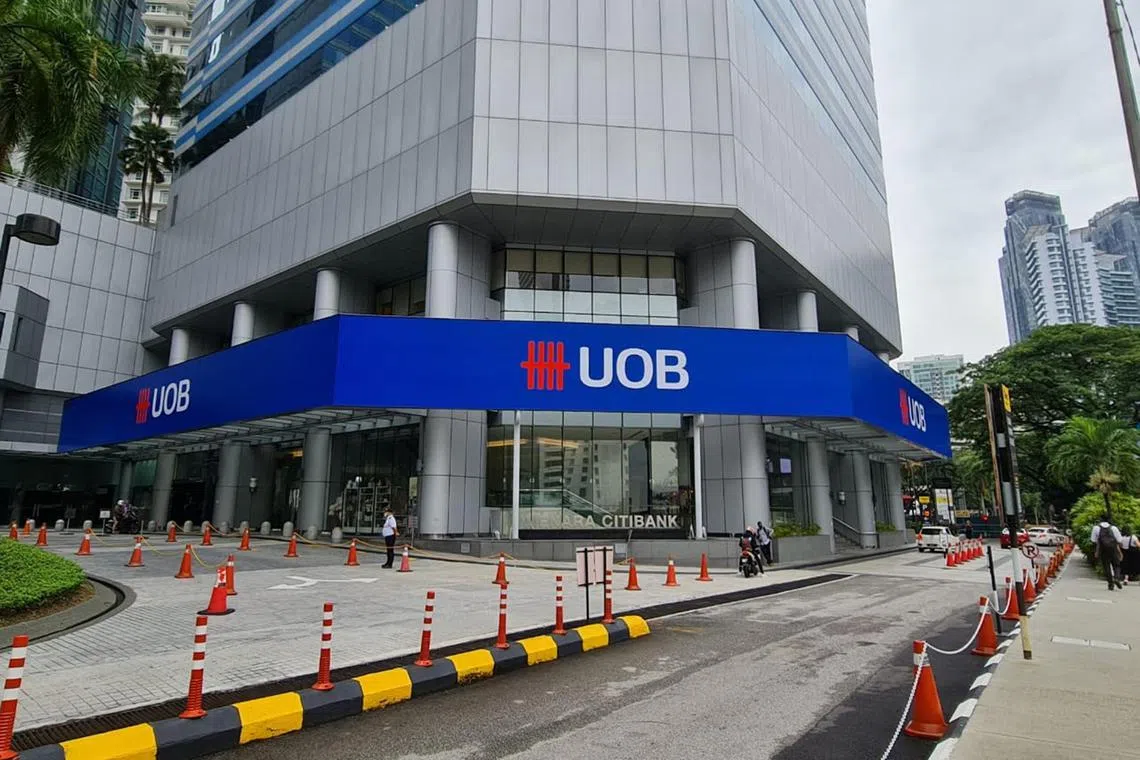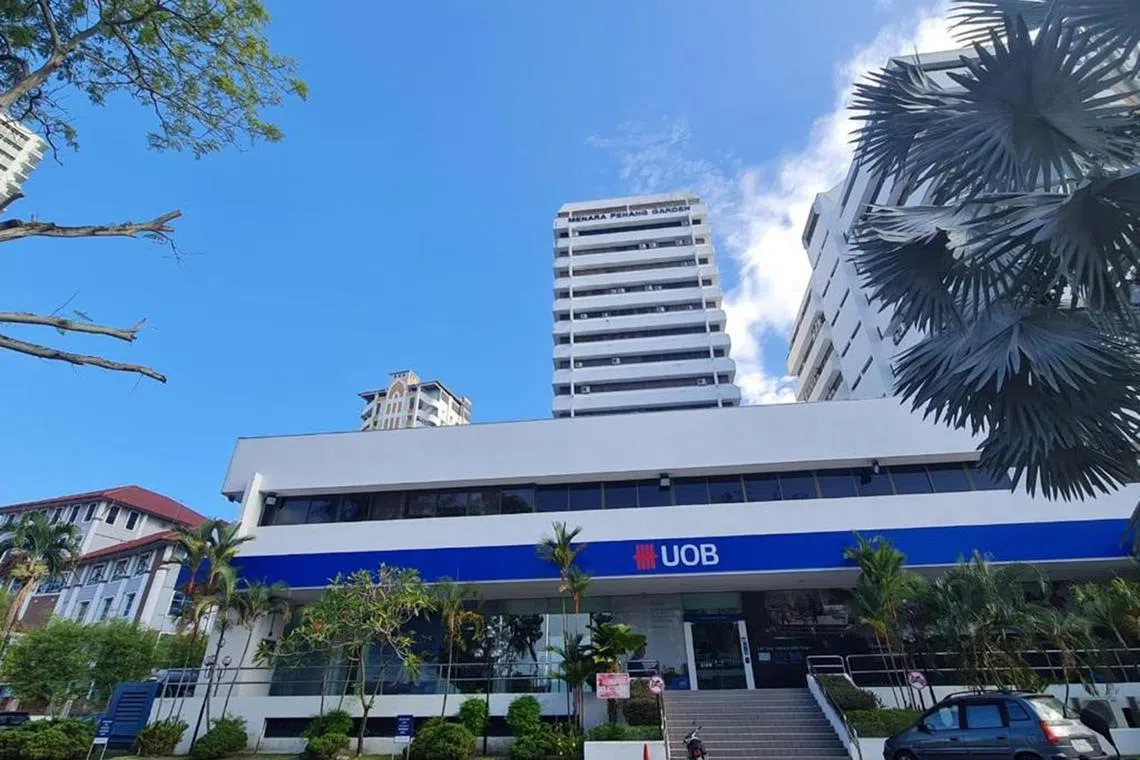UOB adds 15 branches in Malaysia, Thailand and Vietnam after acquisition of Citi consumer business
Sign up now: Get ST's newsletters delivered to your inbox

The UOB Menara Citibank branch in Kuala Lumpur.
PHOTO: UOB
Follow topic:
SINGAPORE – UOB has added 15 branches to its network across Malaysia, Thailand and Vietnam, after finalising the acquisition of Citigroup’s consumer banking businesses
The move brings its total number of branches in the three countries to over 200, at a time when Singapore’s third-largest bank aims to take a bigger bite of South-east Asia’s vast retail market.
More than 90 per cent of Citi consumer banking employees in the three countries have also moved to UOB, helping to expand the bank’s regional workforce from 6,000 to about 10,000. Most of them are front-line workers.
Ms Jacquelyn Tan, UOB’s head of group personal financial services, said the Citi acquisition has helped the bank beef up its cards business and further diversify its income beyond deposits, secured loans such as mortgages and car loans, and wealth management.
UOB has already rebranded all of Citi’s branches with its own name in Thailand and Vietnam, while efforts are under way in Malaysia, she added on Wednesday.
The deal is expected to have grown UOB’s retail customer base in the region to around eight million by the end of 2023 – an increase of two million – once the acquisition of Citi’s Indonesian consumer banking business is completed in the coming months.
The figure currently stands at more than seven million.
UOB announced in January 2022 that it would pay around $5 billion for Citi’s consumer banking franchise in Indonesia, Malaysia, Thailand and Vietnam. It finished acquiring the Thailand and Malaysia units in November 2022, and the Vietnam business in March.
Ms Tan said Citi’s franchise is dominated by unsecured lending, with more than 90 per cent of the US consumer bank’s income in the four markets coming from the cards business.
“When you combine it with the UOB portfolio, we’re still a very balanced business... (That’s) important from a consumer banking point of view because it builds a more sustainable and resilient business model across economic cycles,” said Ms Tan, noting that 40 per cent of the bank’s business comes from unsecured and secured lending.
Net credit card fees almost doubled year on year in the first quarter, with Citigroup’s portfolio accounting for a quarter of the increase.
Total income from the unsecured business is also expected to double by the end of 2023.
Meanwhile, loans grew nearly 10 per cent and deposits rose by 15 per cent in the first quarter, compared with a year earlier.

UOB’S Penang Garden branch, a former Citi branch that the Singapore bank has taken over.
PHOTO: UOB
Ms Tan added that UOB’s Asean markets used to account for 30 per cent of its consumer banking income, with Singapore at 70 per cent, but the region’s share will grow to 40 per cent after the acquisition.
Singapore, Malaysia and Thailand will continue to be UOB’s strongholds, although Indonesia and Vietnam are seen as having big growth potential.
The acquisition is expected to add $1 billion to UOB’s revenue in 2023.
UOB, which has around 400 branches globally, will continue to offer a mix of digital channels and in-person services such as wealth advisory at its branches, said Ms Tan.
“We believe it’s important to invest in our digital transformation... but on top of that, (we need to be) able to transform our physical network,” she noted.
“When we bank customers through the channels they prefer, they are more engaged and they hold more products with us, (and this creates) deeper relationships and more revenue per client.”
Referring to the bank’s mobile app, she added: “We onboard about 800,000 customers a year (in the four Asean markets), of which more than 50 per cent are digitally acquired through our UOB TMRW platform.”

UOB’s Central World 2 Branch in Bangkok.
PHOTO: UOB
The bank’s approach will be slightly different in Vietnam, where it has around 200,000 customers.
UOB will rely more heavily on digital channels to reach the country’s tech-savvy customers, who have high usage of mobile devices, said Ms Tan.
The bank has just five branches in Vietnam, compared with 151 in Thailand and 55 in Malaysia, including the former Citi branches.
Ms Tan noted that the Citi acquisition has also paved the way for more credit card partnerships with regional and global brands.
A customer holding a Singapore-issued UOB card will enjoy the same privileges when spending at a partner merchant in Thailand, just like a UOB Thailand cardholder, she said.
Total cross-border billings for UOB credit cards in Asean grew nearly threefold in the first quarter of 2023 compared with the same period in 2022.


